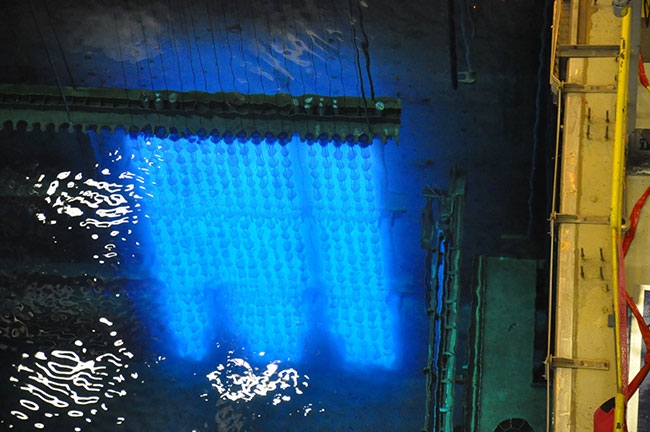
Features
Crop Protection
Inputs
Technology Issues – Studying pepper weevil control
U of G, Bruce Power and Nordion team up for research using Cobalt-60
April 11, 2017 By CNW NEWS SERVICES
 The cobalt rods spend up to two years in Bruce Power’s nuclear reactors.
The cobalt rods spend up to two years in Bruce Power’s nuclear reactors. May 2017 – A high-tech form of insect birth control connected to nuclear power could solve a devastating pest problem for Ontario farmers, says a University of Guelph researcher.
Bruce Power, the world’s largest operating nuclear facility located in Tiverton, Ont., and Nordion, a global health science company that provides market-leading products used for the prevention, diagnosis and treatment of disease, is supporting a multi-year study led by U of G Professor Cynthia Scott-Dupree on sterilizing pepper weevils using Cobalt-60.
The researchers hope to control pepper weevils, which can burrow into farmed peppers and destroy them from the inside.
“It is very difficult to control these insects when they are hidden inside the pepper,” Scott-Dupree explained.
Cobalt-60, which is produced in four of Bruce Power’s eight nuclear reactors, is used for the Sterile Insect Technique (SIT), which could be a powerful strategy for controlling the weevil, said Scott-Dupree, of the U of G’s School of Environmental Sciences.
“We want to move away from insecticide as much as possible, and SIT provides us another tool in our pest management toolbox,” she says. “It fits well with biological control programs that growers already have established in their greenhouses. While no strategy is 100 per cent effective, using nuclear energy to sterilize insects is an environmentally friendly method of controlling these pests. There is no danger of the pepper weevils spreading any radiation following sterilization, so it is also safe for people.”
Scott-Dupree, the Bayer CropScience chair in Sustainable Pest Management at U of G, will send pepper weevils to Nordion, an Ottawa-based supplier of medical isotopes and gamma technologies, which receives its Cobalt-60 from Bruce Power. Gamma radiation from Cobalt-60 will sterilize the insects before they are released to mate normal, unsterilized pepper weevils in greenhouses.
“We will only release pepper weevils that have all the attributes of normal, unsterilized weevils, except that they are sterile,” says Scott-Dupree. “When they mate, the eggs will not be viable, no progeny results and the pest population will decrease.”
Pioneered in the 1950s, SIT has been successfully used to control the codling moth, a pest of apples, in the Okanagan Valley in B.C. since 1992. Scott-Dupree has also recently conducted research that has found that SIT has potential to control American serpentine leafminer, an insect pest that feeds primarily on chrysanthemums.
“This innovative research could improve Ontario’s agricultural sector by reducing the impact of pests on produce, while also providing a possible gateway to the future of farming,” said Mike Rencheck, Bruce Power’s president and CEO.
Scott-Dupree and her team plan to determine the optimum radiation dosage that ensures the sterilization of pepper weevils before testing SIT releases in greenhouses.
“The study will take some time, but the potential it has makes it worthwhile,” she said. “It is exciting to think of all the benefits this study could mean for farmers, Ontario’s economy and the environment.”
“We are excited to see a technology like SIT, which has had wide and successful application in other areas of the world, help us here in Ontario,” said Ian Downie, vice-president of Gamma Technologies at Nordion. “Our partnership with Bruce Power helps us support these kinds of scientific advances using Cobalt-60.”
Print this page